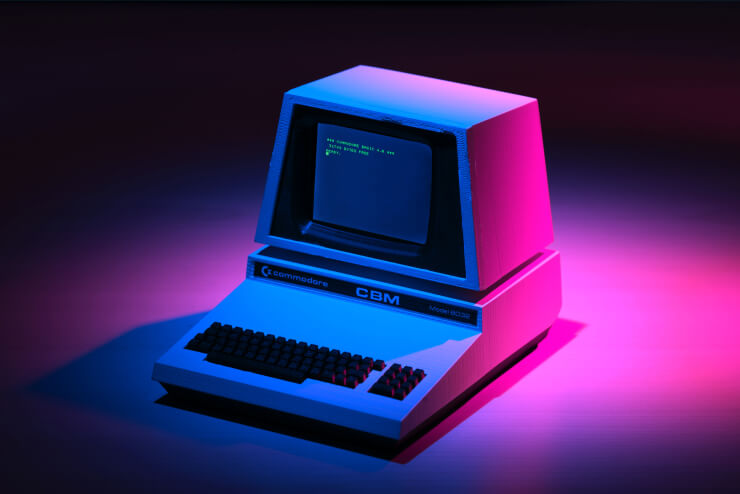The topic of modernising legacy systems may seem outdated, but in today's digital marketplace, it is as relevant as ever. With services expected instantly and expert insights required for smart decisions, outdated systems do not serve today's businesses well.
Not only can legacy systems hinder operations, but they can also leave businesses vulnerable to security attacks.
Despite these setbacks, businesses across many industries still rely on legacy systems to complete operations. Below is an overview of some the biggest industries which depend on legacy systems:
- Nearly ¾ (74%) of Manufacturing companies are dependent on legacy systems and spreadsheets for business operations.
- 92% of the UK’s financial services firms still rely on legacy technology.
- 50% of the UK government’s annual IT spend goes on the maintenance and managing obsolete legacy systems
When your systems are reaching end-of-life or are no longer fit for purpose, it’s time to consider modernisation. Legacy system modernisation aligns the existing legacy software with modern requirements using new technologies.
We have drawn on our experiences working with leading organisations to provide an insight into legacy system projects. This article discusses some of the common pains and fears that businesses encounter when modernising their legacy systems.
Defining legacy
There are many definitions for legacy relating to technology and software development:
“An information system that may be based on outdated technologies, but is critical to day-to-day operations.” - Gartner
“Technology becomes legacy when it is either considered an end-of-life product, out of support from the supplier, impossible to update, no longer cost-effective, now considered to be above the acceptable risk threshold.” - UK Government
As these definitions show, legacy usually refers to an old system or piece of technology.
However, legacy systems are essentially any system that hinders further development or is becoming a burden to your daily operations. Older systems can be well maintained and updated to meet current requirements, while relatively new systems may not receive adequate support.
Legacy systems can, therefore, come in many different forms and range in age. For example, a system may be classed as legacy if it is not receiving adequate updates or is not cloud-first.
Perhaps the only definition that really matters is how your business defines “legacy”. Based on your answer, you can focus your efforts on some systems and leave others alone.
Working with a software development partner will give you an objective insight into the state of your legacy systems. This consultation will also clarify the processes that exist around these systems, as well as your requirements for a new system.
Pains and fears around legacy systems
Businesses are sensitive about legacy systems. These systems have usually been developed over a long period of time and money, making them feel important.
There may be significant pains caused by these systems, but these are outweighed by fears that businesses have about modernising them.
Pains
Maintenance costs
The cost of maintaining ageing infrastructure is higher than the cost of maintaining modernised infrastructure. A review of the tax authority's performance for 2019-2020 revealed that HMRC spent £53.2 million on patching up legacy systems rather than modernising them.
It is difficult to invest in software solutions that can drive business growth when money is spent on keeping legacy systems afloat.
Legacy systems require additional resources and people with specialised skills to maintain. Often, older programming languages and tools are no longer supported. This factor makes it difficult to introduce updates or integrate them with modern systems. Time and money are spent recruiting and maintaining these systems.
Growth
Without access to modern technology, companies will inevitably face barriers to their growth. Modern software applications should provide deep data insights and advanced reporting metrics for supporting critical business decisions.
Legacy systems, on the other hand, cannot provide visibility into data flows. Without this visibility a business is unable to make strong decisions and grow their operations effectively.
Additionally, legacy systems limit businesses' ability to provide the best customer experience. Keeping today's connected customers engaged requires a unified Customer Experience. However, legacy systems often result in siloed operations and disconnected customer services.
A business cannot grow to its full potential or deliver key insights without integrating key departments, such as marketing and sales.
Security & compliance
There are many outdated systems that are no longer supported by the manufacturer. A single unpatched vulnerability can therefore enable attackers to gain access to all server-side applications and databases.
In addition, the firm will be unable to adequately safeguard its data without adequate backup and disaster recovery solutions.
Fears
Cost of modernising
Financial fears are much the same as financial pains. Modernising old infrastructure can be costly, which makes businesses wary of committing to the project. Investing in a new, modern system often requires upfront investments from key stakeholders and the organisation as a whole.
There are many different reasons why maintaining an outdated system generates additional costs, some of which we have already mentioned. Modernising these systems can be a lengthy process, but the longer you wait, the greater risk this tech will become.
Modernising your systems will cost you less than the exponential financial and business costs of leaving them unattended. If a company does not update its software properly, then it limits access to modern technologies and, therefore, competitive advantage.
Impact on Operations
Modernising your legacy systems extends beyond technology and can require a business to transform their processes.
Employees who have worked on legacy systems for a period of time are likely to have some attachment to the system. Even if this legacy technology causes workarounds, employees still see the system as familiar and may, therefore, be resistant to change.
However, modernising legacy systems does not need to require an all-or-nothing approach. Changes can be implemented gradually, involving only those parts of the software that are essential to daily operations.
Depending on the situation, it may be necessary to refine or replace the existing system. A company's strategy, long-term business goals, and existing problems will strongly influence the size and complexity of any changes.
Organisations can better prepare for the cultural and technical impacts of transformation by focusing first on business processes. Changing processes without planning can lead to productivity losses and even lower employee morale.
Overcoming fears and solving pains
Businesses can be overwhelmed when it comes to dealing with their legacy systems. Faced with mounting pain points and concerns, it can be difficult to know where to begin. One starting point is to assess your existing software setup and the processes that surround these systems.
By working with a software development partner, you can address these fears and identify quick wins.
Planning the project is always a good start. Consider everyone who is directly affected by a legacy application, either as users or maintenance. Having conversations with employees who use the systems is one effective part of identifying current pain points. These discussions will also determine what features and processes should be changed or preserved.
Taking the time to understand your processes will help you clarify any issues. From here, your business will be enabled to work out what it wants to solve and achieve in the long run.
Audacia is a software development company with extensive experience supporting organisations in their legacy modernisation projects. We have worked across industries ranging from automotive and manufacturing to agriculture and housing. By providing expert advice and consulting services, we have formed strong professional relationships with our clients.
Our services include software development consulting, digital transformation consulting and software development. Above all, we develop software that is fit for purpose, with the ability to scale and adapt as is required.
Having outlined some of the common issues that businesses face with their legacy systems, our next insight will look at the approaches to modernising these systems.
Interested in finding out more about how you can upgrade your legacy systems? Get in touch with Audacia today on 0113 543 1300, or email info@audacia.co.uk


